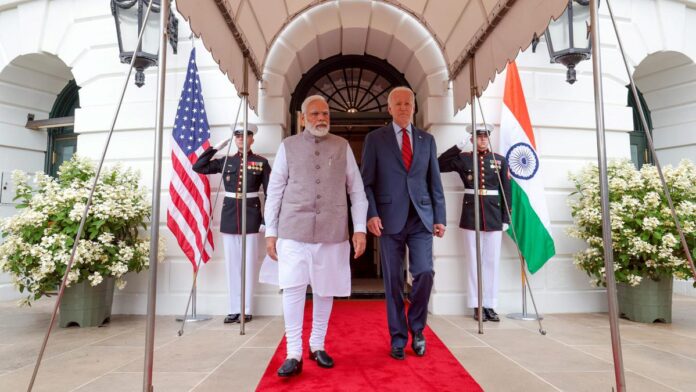India is indeed likely to be a rising “great power” and its economy will have the size similar to that of the US by 2050, according to noted economics commentator Martin Wolf who has also highlighted that Western leaders are making a sensible bet on the country.
“I judge that India should be able to sustain growth of GDP per head at 5 per cent a year, or so, up to 2050. With better policies, growth might even be a bit higher, though it could also be lower,” Wolf said.
He also said India is an obvious location for companies following a “China plus one” strategy and has the advantage over obvious competitors of a large home market.
India is the world’s fifth largest economy and third largest one in terms of purchasing power. The United Nations has forecast the country’s population to touch 1.67 billion by 2050 and currently it is 1.43 billion.
Wolf noted that the country’s bank balance sheets have been repaired and in all, “the credit engine is once again in quite good shape”.
Noting that the country’s population and economy are both forecast to grow rapidly over coming decades, offering a counterweight to China, Wolf said closer western relations with India make good sense.
“Joe Biden’s warm embrace of the once-banned Narendra Modi, now its politically dominant prime minister, in Washington and Emmanuel Macron’s equally warm embrace of the Indian leader in Paris are aimed at forging a close relationship with a country expected to be a powerful counterweight to China.
“Is this a good bet for western powers? Yes. India is indeed likely to be a rising great power. Interests also align. But how far values are shared is a more open question,” he said.
He also said the International Monetary Fund (IMF) has forecast an annual economic growth at a little over 6 per cent from 2023 to 2028, with GDP per head growing at roughly one percentage point more slowly.
“Such growth would be quite close to the averages of the past three decades. Provided the country is not buffeted by big global or domestic shocks, this sounds perfectly feasible, even rather plausible,” he said and added that the country still has huge room for catching up.
It is also a young country, with a grossly underemployed labour force, potential for improving the quality of that labour force, a reasonably high savings rate and increasingly widespread hopes of greater prosperity, he added,
Further, Wolf said a great deal of adaptation will be required to meet the climate change challenge, given the failure to bring global emissions down. But the energy transition also offers huge opportunities to India.
“… by 2050, India’s GDP per head (at purchasing power) would reach about 30 per cent of US levels, roughly where China’s is today,” Wolf said on the assumption that the country’s GDP per head continues to grow at 5 per cent a year while that of the US grows at 1.4 per cent.
Citing UN median forecasts, Wolf said that India’s population would also be 4.4 times as big as that of the US.
“So, its economy would be some 30 per cent larger than the US’. It is, in sum, quite reasonable to assume that India will become a great power. It is not that hard to imagine that its economy will be of a similar size to that of the US by 2050. Thus, western leaders are making a sensible bet on an alliance of convenience with India,” he said.
On Wednesday, World Bank President Ajay Banga, who is on a visit to India, said that domestic consumption provides a natural cushion to the country’s economy against global slowdown as bulk of the GDP depends on local demand.

































